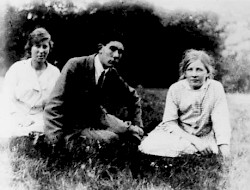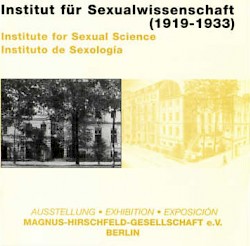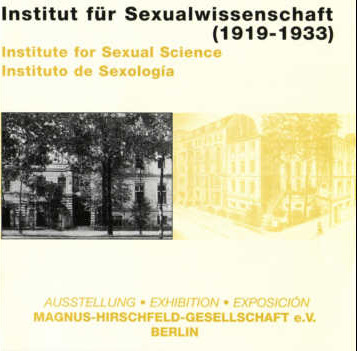Visitors and Residents


Francis Turville-Petre
1901-1941 – Anthropologist, archaeologist
Turville-Petre came from a Catholic, landed gentry family in England. He studied archaeology and anthropology in Oxford and Jerusalem from 1920-1925. He gained recognition in his field through his excavations at the Sea of Galilee.
In 1928, Turville-Petre moved to Berlin and resided at the Institute, where he held lectures. He was an active member of the Scientific Humanitarian Committee and attended the congress of the World League for Sexual Reform in Copenhagen.
His openly homosexual manner in liberal Berlin made an impression on the young English writers, Christopher Isherwood and Wystan Auden, and he became their knowledgeable guide through the nightlife of the Berlin’s homosexual subculture.
Turville-Petre left Berlin in 1931 and went to Greece. He died in Egypt.

Christopher Isherwood
1904-1986 – Writer
Isherwood, who grew up in England, came to Berlin through his friend, Francis Turville-Petre, in 1929 and stayed with him at the Institute until 1930.
Hirschfeld evidently did not make any distinction between visitors and residents at his institute. In his book “Christopher and His Kind”, Isherwood refers to Hirschfeld’s “eye for a patient”:
“Like the young man with the female breasts and everyone else who entered the domain of the Institute, Christopher had automatically become a museum specimen, subject to Hirschfeld’s diagnosis and classification. Karl told him…, that Hirschfeld had classified him as ‘infantile.’ Christopher didn’t object to this epithet; he interpreted it as ‘boyish.’”
Isherwood, who, together with Francis Turville-Petre and Wystan Hugh Auden, stayed on in Berlin until 1933, left Germany subsequently. In 1946, he became an American citizen and worked as a literature professor. He was made famous by, amongst others, his book “Goodbye to Berlin” on which the musical “Cabaret” was based. He died in Santa Monica, California, in 1986.

Til Brugman
1888-1958 – Poet and interpreter
In 1926, this writer and poet, who had become famous on account of her Dadaist poems, made the acquaintance of the Dada-artist Hannah Höch (1899-1978). From then on, they lived together as a couple in The Hague and, subsequently, in Berlin, from 1929 to 1936.
In August, 1931, Til Brugman visited the Institute to have a look at the “pathological museum” of a certain “Professor Hirschmann or something like that”. She remembered the collections much more clearly than she did the name and founder of the Institute: she wrote a grotesque tale about it, titled “Department Store of Love” and had the story end with a menacing vision, thereby seemingly anticipating the Institute’s imminent demise.

Willi Münzenberg
1889-1940 – Communist, newspaper proprietor
He joined the Communist Party in 1919 and was elected to its its Central Committee in 1924. Münzenberg was an influential proprietor and publisher of several newspapers, for which Institute staff members wrote articles. He thus gave them access to the Leftwing press.(Educational Work)
In 1926, he lived with his wife Babette Gross at the Institute. His flat at the Institute was used by the Comintern (Communist International) for illegal meetings.
In 1933, he emigrated to France and died there in 1940. The circumstances of his death are still unclear.
